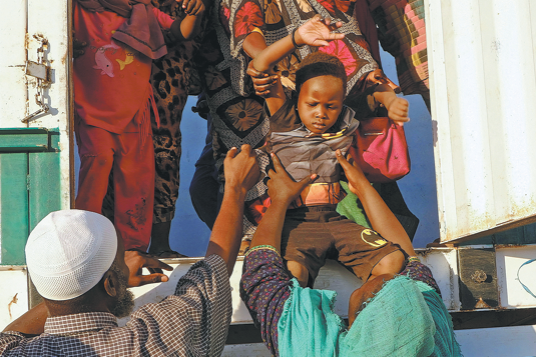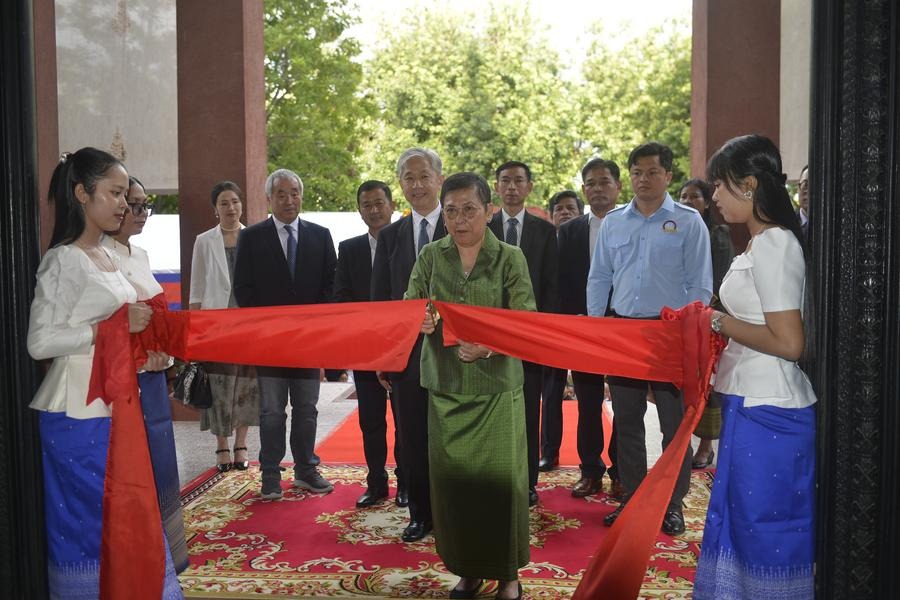Former US ambassador sees BRI unlocking Africa's youth potential

As the Belt and Road Initiative enters its second decade in Africa, experts praise its role in building digital infrastructure that can harness the continent's youthful population for shared economic gains.
Charles Ray, former US ambassador to Zimbabwe with deep experience across Africa, said the BRI holds strong promise to activate the continent's demographic dividend through projects such as 5G networks and e-commerce platforms.
"If properly implemented, in ways that fit a country's capacity and are supportive of job creation and environmental protection, digital infrastructure under the BRI could help to unlock much of Africa's demographic potential," Ray said.
Since its launch in 2013 until 2022, the BRI had delivered more than $290 billion in completed construction contracts across Africa, laying roads, ports and railways that enhance trade and connectivity, according to the China Global Investment Tracker of the American Enterprise Institute.
With more than 60 percent of Africans under 25, Ray said, these investments can directly address youth unemployment and spur economic diversification when aligned with local priorities.
He highlighted the BRI's potential to exemplify multilateralism through economic focus rather than political imposition, provided governance risks are addressed. Building on this, strong policy frameworks can ensure BRI projects deliver transparent results, he said. "Before finalizing a project, a country's ability to service foreign debts should be carefully analyzed."
Recent research backs this approach. At a Nov 6 forum in Accra, capital of Ghana, organized by the Africa-China Centre for Policy and Advisory, the book Africa-China Linkages: Building Deeper and Broader Connections found no evidence of a "China debt trap".
"The notion of a 'China debt trap' in Africa is not supported by empirical data," said Alfred Schipke, a professor at the National University of Singapore, who edited the book.
Ray also said that African nations seek BRI partnerships built on shared responsibility and local ownership, prioritizing job creation, technology transfer and equal management voice under local laws because these steps can ease United States-China tensions while advancing African goals.
"Regardless of whether a country decides to partner with China or the US — and in my experience, most want partnerships with both because China and the US each have unique benefits to offer — it should be done in a way that is mutually beneficial," he said.
A report released earlier this month by the Centre for Economic Policy Research in London said the BRI does not exclude non-Chinese companies, and that US investments are rising in some countries involved in the BRI.
Positive outcomes
Ray agreed, highlighting potential for collaboration. "If China and the US look at countries on the basis of how all parties can benefit, rather than trying to outcompete each other, there is a possibility for positive outcomes," he said.
To foster inclusive growth, Ray recommended that the BRI emphasize local capacity and self-sufficiency. "The BRI, or any foreign investment, for that matter, should focus on building local capacity, creating local jobs and increasing the self-sufficiency of local populations," he said.
He called for long-term partnership deals that reflect Africa's coming demographic weight: 25 percent of the world's population by 2050, mostly young and urban.
Ray envisioned the BRI reshaping Africa-China ties into a model of shared prosperity. "If China and the United States can both realize that our two countries will always be economic competitors, but that competition does not have to be hostile, and that in the future, both will need Africa … everyone can benefit," he said.
According to China's Foreign Ministry, with $51 billion in new funding pledged at last year's Forum on China-Africa Cooperation, the BRI continues expanding opportunities for sustainable, African-led development.
yifanxu@chinadailyusa.com


































